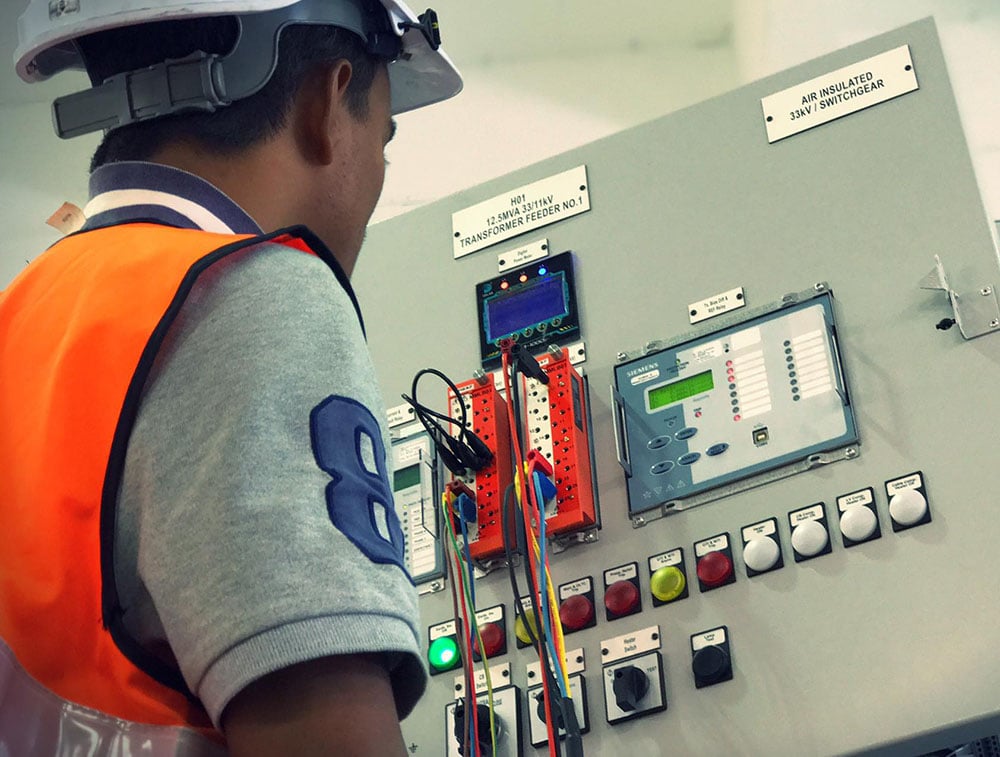Description
This masterclass course provides a deep understanding and knowledge in power substations. You will learn the most common substation equipment such as switchgear, transformers, isolators, earth switch, CTs & VTs, shunt reactor, batteries and others. The great attention is given to the busbar schemes (configurations), transformer protection and substation relay control & protection.
The course consists in 22 lessons, 97 lessons and 9h 2min total length.
The course starts with discussing three most common substation types (air-insulated, gas-insulated, and hybrid), their comparison in working principle and layout. You will learn the main components installed in most of substations, such as switchgear, transformers, isolators, earth switches, instrument transformers (CTs, VTs), fuses, capacitor banks, shunt reactors and many others.
You will learn about batteries installed in power substation, charger techniques and how to depict batteries in a single-line diagram.
The next big chapter will cover the most common busbar configurations and layouts, such as single-Bus single-breaker scheme (with and without Bus Section CB), double-bus single-breaker scheme, one-and-half breaker scheme, ring or mesh busbar scheme and few others.
Finally, we’ll discuss a medium voltage switchgear and all its compartments. You will also learn the essentials about substation earthing.
Following topics are covered in this course:
- What are substations?
- Types of substations
- What are air insulated substation?
- What are gas insulated substations?
- What are hybrid substation?
- Comparision of GIS and AIS substations
- GIS & AIS foot print comparison
- What is difference between Substation and Grid Station?
- Why substations are required?
- What is Ferranti Effect?
- How was earlier power distribution look like?
- Development of 1st AC Transmission Line and Substation
- Brief history of Tesla Lab
- Components of substation
- Development of 1st AC Transmission Line and Substation
- Transformer basics
- Induced Voltage & per turn relationship.
- Transformer Turn Ratio and full load current calculations.
- Percentage Impedance of Transformer
- Transformer Vector Group
- Polarity of transformer
- Radiator in Transformer
- Types of Cooling, Why Two ratings are given at name plate of transformer
- Buchholz Relay, installation, operation, construction
- Sudden Oil Pressure Relay
- Oil and Winding Temperature Indicator
- Oil Level Indicator
- Pressure Relief Device
- Bushing of Transformer and Bushing Test Tap
- Rupture Disc
- Tap Changers Types and requirements
- On load and Off load tap changers
- Transformer General Arrangement Drawing
- Transformer Name Plate.
- Silica Gel and Breather
- Isolator
- Circuit Breaker
- Earth Switch
- Voltage Transformer
- Current Transformer
- Cable Sealing End
- SF6 to Air Bushing
- Busbar in substation
- Visual inspection of transformer
- Auxiliary Transformer
- NGR Neutral Ground Resistor
- Application of NGR using ETAP
- Fuses
- Shunt Reactor
- Shunt Reactor at Single Line Diagram
- Current Limiting Reactor
- Communication System Between Substations PLC and Fiber Optic
- Capacitor Bank In substation
- Surge Arrestor
- Lighting Rod and Mast
- Thermal Imaging Technique
- Busbar Scheme, Single bus Single Breaker Scheme
- Single Bus and Single Breaker Scheme with Bus Section CB
- Double Bus Single Breaker Scheme
- One and Half Breaker Scheme
- Ring or Mesh Busbar Scheme
- Double Bus Double Breaker Scheme
- Main and Transfer Bus System
- Double Bus System with bypass isolator
- Concept of Interlocking at Substation
- Philosophy of Protection System
- Control and Protection System in Substation
- ANSI Codes for presentation of devices
- Faults in Power System
- Characteristics of Protection System.
- Protection Zone Over lapping and Blind Zones in Power System
- Protection Relays and its type
- Induction Disk Type Electromechanical Relay
- Attracted Armature Type Relay
- Static, Digital and Numerical Relays
- Protection Relays types with respect to function
- Tripping Relays, Lockout Relays, Aux Relays and tripping coils
- 85 Batteries in Substation, Single line diagram, charging techniques
- MV Switchgear, compartments, MV compartment, CB compartment, Busbar Compartment, LV compartment
- Substation Earthing system
Course Summary
- Introduction
- Substation History
- Substation Types and Comparison
- Substation Components
- Transformer
- Circuit Breaker
- Fuses
- Isolator – Disconnector
- Earth Switch
- Current and Voltage Transformers
- Capacitor, Surge Arrester and Lightning Protection
- Shunt Reactor and Current Limiting Reactor
- Neutral Ground Resistor (NGR)
- Cable Sealing End
- SF6 to Air Bushing
- Busbar Schemes and Arrangements
- The Concept of Interlocking in Substation
- Substation Communications
- Substation Batteries
- Substation Relay Protection
- Medium Voltage Switchgear
- Substation Earthing
Who Is This Course For
- Anyone who wants to learn power substations from scratch
- Electrical Engineering Students
- Electrical Engineering Graduates
- Electrical Engineers who work in the field of substations and switchgears
- Electrical Control Engineers
- Electricians
- Power/Utility Engineer
Requirements
- Passion to learn
- The basic electrical principles







Reviews
There are no reviews yet.